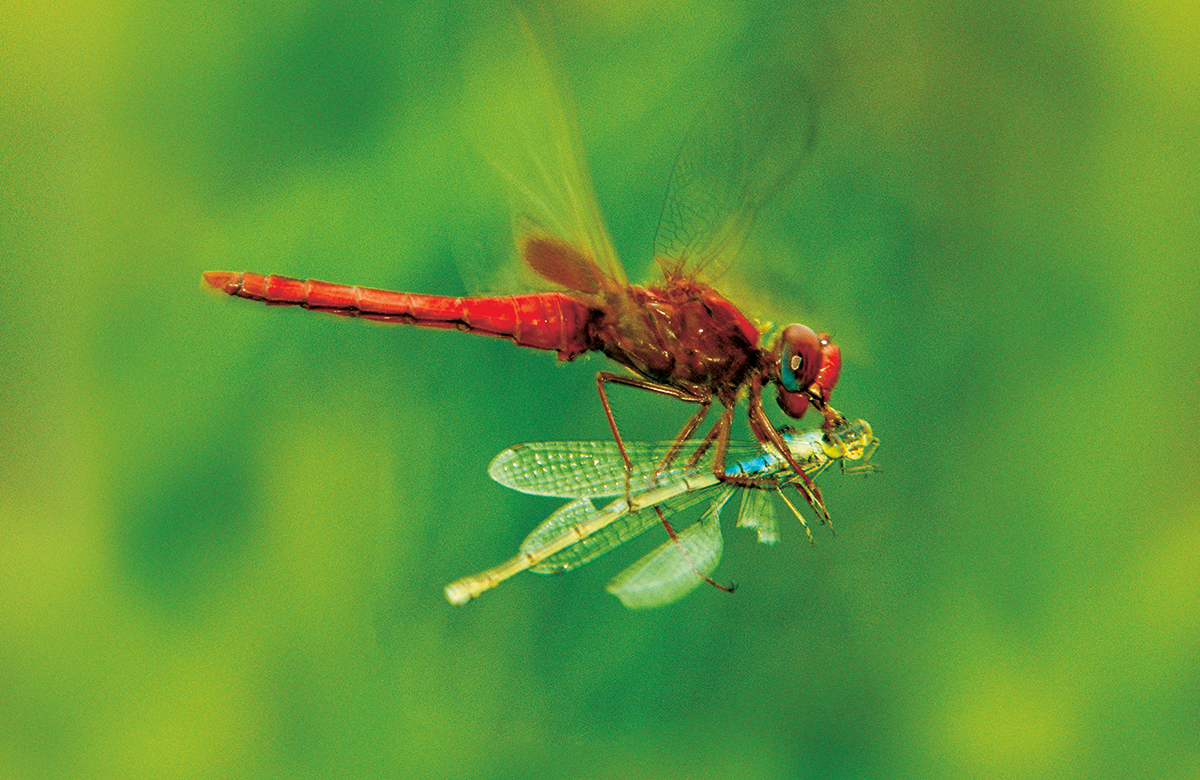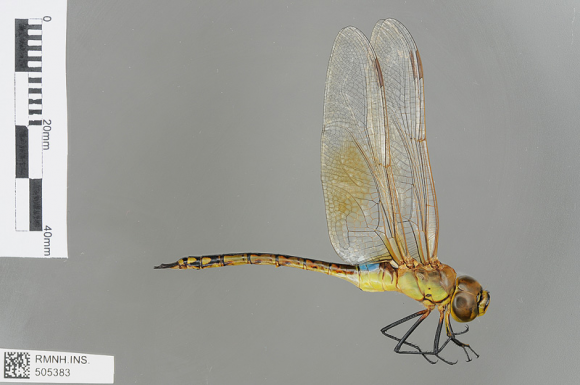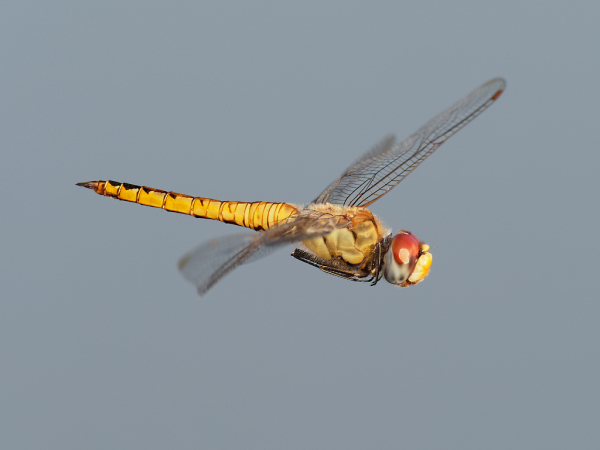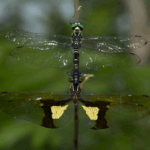Here’s an edited and expanded version of the article “Wings of Wonder: The Fascinating Life and Habits of Dragonflies” in approximately 2,000 words:Wings of Wonder: The Fascinating Life and Habits of DragonfliesDragonflies, with their iridescent wings and acrobatic flight, have captivated human imagination for centuries. These ancient insects, having graced our planet for over 300 million years, are not only beautiful but also play crucial roles in various ecosystems. In this article, we’ll explore the intriguing world of dragonflies, delving into their life cycle, unique adaptations, and ecological significance.

The Dragonfly’s Life Cycle
Dragonflies undergo incomplete metamorphosis, a process that involves three distinct stages: egg, nymph, and adult. This journey from water to air is a testament to their remarkable adaptability.Egg StageThe dragonfly’s life begins as an egg, typically laid in or near water. Female dragonflies have evolved various egg-laying strategies. Some species deposit their eggs directly into the water, while others insert them into aquatic plants or mud near water bodies. The eggs are usually tiny, measuring about 0.5 to 1.5 millimeters in length.Depending on the species and environmental conditions, the eggs may hatch within a few weeks or enter a period of diapause, allowing them to survive harsh winters or dry seasons. This adaptability ensures that the young emerge when conditions are most favorable for their survival.Nymph StageOnce the eggs hatch, the dragonfly enters its nymph stage, also known as the naiad stage. Dragonfly nymphs are aquatic and look strikingly different from their adult counterparts. They lack wings and possess a stocky body with six legs and a large lower lip called a labium.The nymph stage is characterized by:
- Aquatic habitat: Nymphs live entirely underwater, inhabiting various freshwater environments such as ponds, streams, and marshes.
- Predatory nature: Dragonfly nymphs are voracious predators, feeding on aquatic insects, small fish, and even tadpoles.
- Unique breathing mechanism: They breathe through gills located in their rectum, which also serves as a means of jet propulsion for quick escapes.
- Multiple molts: Nymphs undergo several molts as they grow, shedding their exoskeleton up to 15 times before reaching adulthood.

The duration of the nymph stage varies greatly among species, ranging from a few months to several years. Some dragonflies, particularly those in colder climates, may spend up to five years as nymphs before emerging as adults.Adult StageThe transformation from nymph to adult is a critical and vulnerable period in a dragonfly’s life. When ready to emerge, the nymph climbs out of the water onto a suitable surface, such as a plant stem or rock. There, it undergoes its final molt, splitting its exoskeleton and emerging as a soft-bodied adult.The newly emerged dragonfly, known as a teneral, is pale and unable to fly. Over the next few hours, it pumps hemolymph (insect blood) into its wings, allowing them to expand and harden. The dragonfly’s body also darkens and develops its characteristic colors.Adult dragonflies are known for their:
- Exceptional flying abilities
- Large compound eyes
- Vibrant colors and patterns
- Short lifespan, typically lasting only a few weeks to a few months
During this stage, dragonflies focus on feeding, mating, and for females, laying eggs to continue the cycle.
Unique Adaptations and Abilities
Dragonflies possess a range of fascinating adaptations that have contributed to their evolutionary success and made them one of nature’s most efficient predators.Unparalleled Flight CapabilitiesDragonflies are renowned for their exceptional flying skills. Their four wings can move independently, allowing for incredible maneuverability. Key features of their flight include:
- Ability to fly in any direction, including backwards and sideways
- Hovering capability
- Speeds of up to 35 miles per hour (56 km/h) in some species
- Sudden changes in direction and rapid acceleration
These abilities make dragonflies formidable aerial predators and help them evade their own predators.Remarkable VisionDragonflies possess some of the most sophisticated eyes in the insect world. Their large compound eyes consist of up to 30,000 individual lenses called ommatidia. This gives them:
- Nearly 360-degree vision
- The ability to detect colors and polarized light
- Exceptional motion detection, allowing them to track and intercept prey with high precision
Some species can even see into the ultraviolet spectrum, a capability that may play a role in mate selection and navigation.Efficient Predatory MechanismsDragonflies are highly successful hunters, with a catch rate of up to 95% in some species. Their predatory adaptations include:
- Strong, spiny legs that form a basket-like structure for catching prey in mid-air
- Powerful mandibles for crushing and consuming their catch
- The ability to predict where their prey will be, thanks to specialized neurons in their brain
These adaptations allow dragonflies to capture and eat a wide variety of insects, including mosquitoes, flies, and even other dragonflies.
Ecological Significance
Dragonflies play crucial roles in both aquatic and terrestrial ecosystems. Their presence or absence can serve as an indicator of ecosystem health, particularly in freshwater habitats.Pest ControlAs voracious predators, dragonflies help control populations of insects that humans often consider pests. They consume large numbers of mosquitoes, both in their nymph and adult stages, contributing to natural mosquito control. This not only reduces the nuisance factor but also helps in controlling mosquito-borne diseases.Food Web DynamicsDragonflies occupy an important position in food webs:
- As predators, they help regulate populations of smaller insects
- As prey, they serve as a food source for birds, fish, frogs, and other animals

Their role in transferring energy from aquatic to terrestrial ecosystems is particularly significant, as they emerge from water bodies and become available as prey for land-dwelling animals.BioindicatorsThe presence and diversity of dragonfly species in an area can indicate the health of aquatic ecosystems. Many dragonfly species are sensitive to:
- Water pollution
- Habitat destruction
- Changes in water flow or temperature
As such, monitoring dragonfly populations can provide valuable insights into the overall health of freshwater habitats and help in conservation efforts.
Threats and Conservation
Despite their ancient lineage and adaptability, many dragonfly species face threats in the modern world. The primary challenges include:Habitat LossThe destruction and degradation of freshwater habitats pose a significant threat to dragonfly populations. Wetland drainage, river channelization, and urban development all contribute to the loss of suitable breeding and hunting grounds for these insects.Water PollutionDragonflies, particularly in their nymph stage, are sensitive to water quality. Pollution from agricultural runoff, industrial waste, and urban areas can have severe impacts on dragonfly populations.Climate ChangeAlterations in temperature and precipitation patterns due to climate change can affect dragonfly habitats and life cycles. Some species may be forced to shift their ranges, while others might struggle to adapt to changing conditions.Conservation EffortsTo protect dragonflies and their habitats, various conservation initiatives are underway:
- Habitat restoration projects, including the creation and protection of wetlands
- Water quality improvement programs
- Public education and citizen science projects to raise awareness and gather data on dragonfly populations
- Species-specific conservation plans for endangered dragonflies
These efforts not only benefit dragonflies but also contribute to the overall health of freshwater ecosystems and the many other species that depend on them.

Cultural Significance
Throughout history, dragonflies have held various cultural meanings and have been featured in art, literature, and folklore around the world.SymbolismIn different cultures, dragonflies have symbolized:
- Change and transformation
- Speed and agility
- Purity and harmony
- Good luck and prosperity
Their iridescent beauty and seemingly magical flight have inspired countless stories and artistic representations.In Art and DesignDragonflies have been a popular motif in various art forms:
- In Japanese art, they often represent strength, courage, and happiness
- Art Nouveau artists frequently incorporated dragonfly designs in jewelry and decorative objects
- Contemporary artists and designers continue to draw inspiration from dragonflies’ elegant forms and vibrant colors
Scientific InspirationThe unique abilities of dragonflies have also inspired technological innovations:
- Their flight capabilities have influenced the design of drones and other flying machines
- The structure of their wings has inspired developments in aerodynamics
- Their visual system has provided insights for improving camera technologies and artificial vision systems
Dragonflies, with their ancient lineage and remarkable adaptations, offer a fascinating glimpse into the wonders of the natural world. From their complex life cycle and extraordinary abilities to their ecological importance and cultural significance, these insects continue to captivate scientists, naturalists, and casual observers alike.As we face growing environmental challenges, the study and conservation of dragonflies become increasingly important. These insects not only serve as indicators of ecosystem health but also remind us of the intricate connections within nature. By protecting dragonflies and their habitats, we contribute to the preservation of biodiversity and the health of our planet’s freshwater ecosystems.The next time you spot a dragonfly darting across a pond or hovering near a stream, take a moment to appreciate the millions of years of evolution, the complex life cycle, and the vital ecological role embodied in this small but remarkable creature. In the delicate balance of nature, even the tiniest wings can create ripples of wonder and significance.






